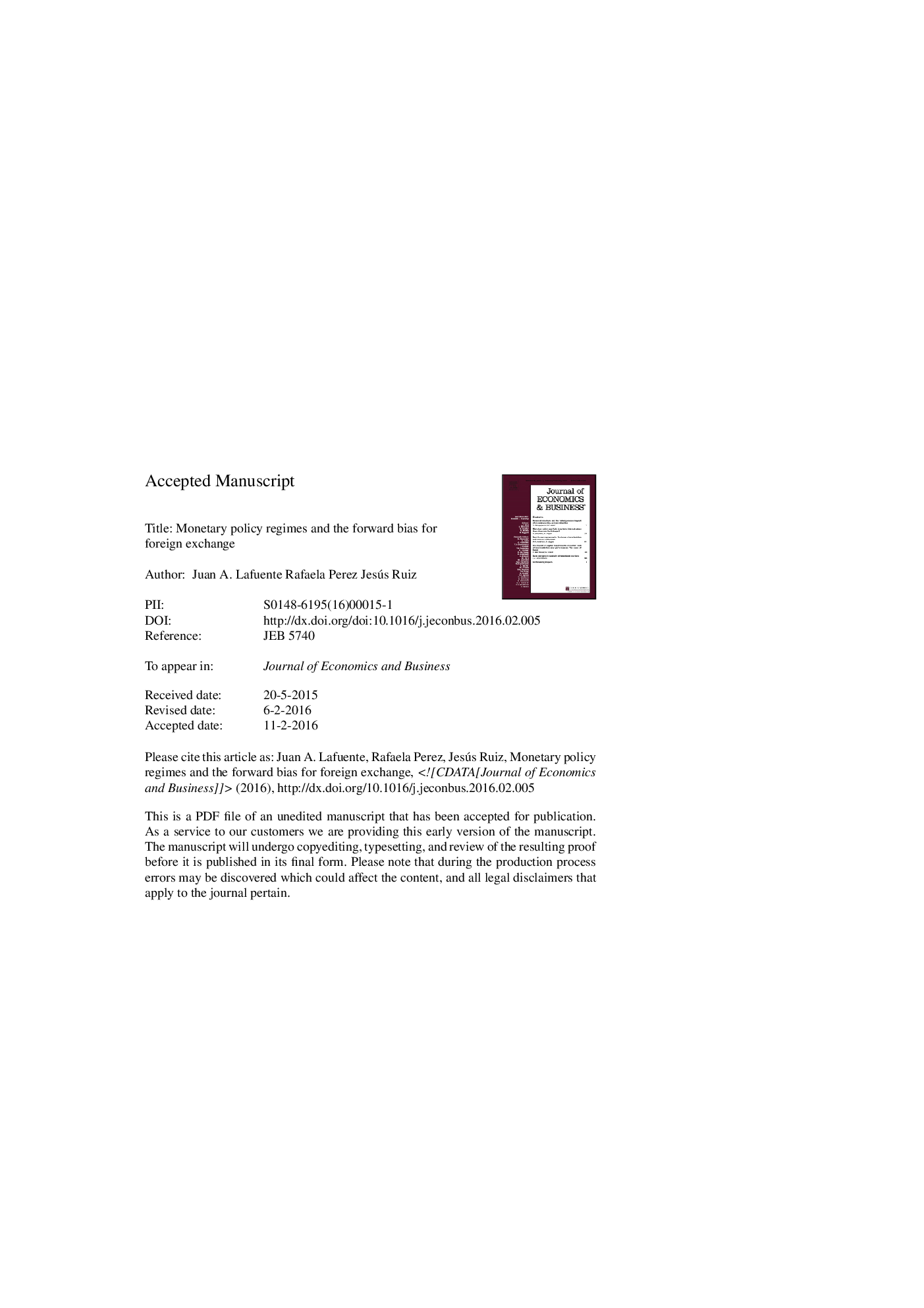| Article ID | Journal | Published Year | Pages | File Type |
|---|---|---|---|---|
| 957827 | Journal of Economics and Business | 2016 | 26 Pages |
Abstract
This paper provides a theoretical discussion of the forward premium anomaly. We reformulate the well-known Lucas (1982) model by allowing for the existence of monetary policy regimes. The monetary supply is viewed as having two stochastic components: (a) a persistent component that reflects the preferences of the central bank regarding the long-run money supply or inflation target, and (b) a transitory component that represents short-lived interventions. To generate agents' forecasts, we consider two scenarios: (a) consumers can distinguish the permanent and the transitory components of the money supply (complete information), and (b) consumers face a signal-extraction problem to disentangle permanent and transitory components of the money supply (incomplete information). We simulate the model from a careful estimate of the parameters involved in the model. Numerical simulations reveal that, under complete information, forward unbiasedness cannot be rejected at conventionally significant levels. However, when learning about monetary policy is incorporated, the forward bias can be reproduced without artificially assuming an unreasonable degree of risk aversion.
Related Topics
Social Sciences and Humanities
Business, Management and Accounting
Strategy and Management
Authors
Juan A. Lafuente, Rafaela Pérez, Jesús Ruiz,
